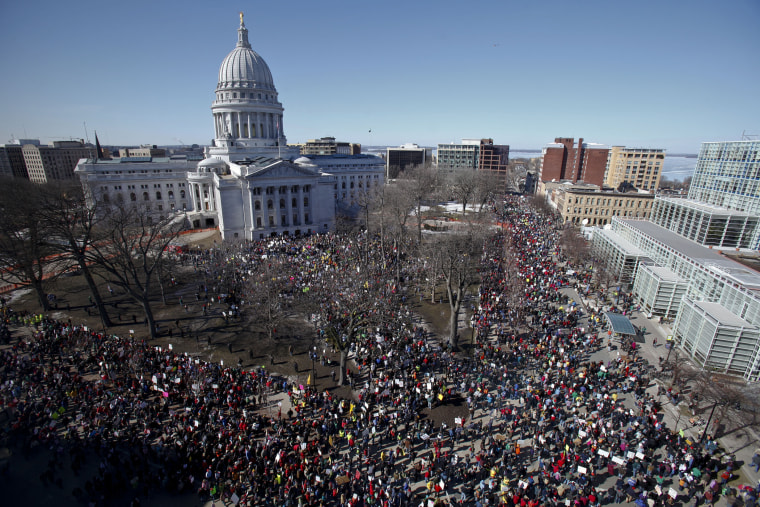Ahead of the 2016 presidential election, Democrats weren't just optimistic because of the polls. They also spent quite a bit of time fiddling with sites like 270 to Win, exploring different scenarios with the electoral college, and concluding that Donald Trump's path to the White House simply didn't exist.
After all, the Clinton/Kaine ticket could lose several of the battleground states Barack Obama had won at least once -- Florida, Ohio, Iowa, and North Carolina -- and still win the election thanks to the "blue wall" in the Rust Belt.
Before 2016, in six of the previous six presidential elections, Michigan and Pennsylvania had voted Democratic. In Wisconsin, it was seven of the previous seven. So long as these three states remained in the "blue" column, Hillary Clinton would be the next president.
We now know, of course, that this didn't happen. Michigan, Pennsylvania, and Wisconsin each went "red."
Two years later, these same three states appeared to swing back in the other direction.
Michigan: Voters in Michigan elected a Democratic governor, re-elected a Democratic U.S. senator, and picked up enough state Senate seats to end the GOP's supermajority. Though some votes are still being counted, Democratic candidates also appear to be well positioned in the race for state attorney general and in the closely watched race in the 8th congressional district, which appears set to flip from "red" to "blue."
Pennsylvania: Voters in Pennsylvania re-elected a Democratic governor, re-elected a Democratic U.S. senator, and erased the GOP's supermajority in the state Senate. Democrats also appear to have flipped four congressional districts in the state from "red" to "blue."
Wisconsin: Voters in Wisconsin elected a Democratic governor (for the first time in a while) and re-elected a Democratic U.S. senator. Though the race hasn't been called, the Dem also appears to be ahead in the race for state attorney general.
This is not to say that Trump will necessarily lose these states in two years -- a lot can happen in 24 months -- but if the "blue wall" crumbled in 2016, Democrats took steps to put it back together again in 2018.
